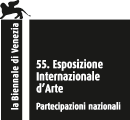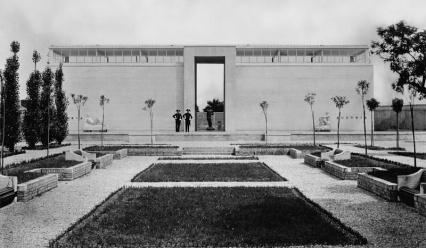The Austrian Pavilion within the gardens of the Venice Biennale was built in 1934. Its clear, symmetrical construction, an architectural landmark among the national pavilions, was immediately acclaimed by critics of the time as both modern and forward-thinking.
Architect Josef Hoffmann had presented designs for a pavilion in Venice as early as 1912, however they were not developed into a building. The project was resuscitated during the 1920s, but was shelved once again for financial reasons. During this time Austria continued to exhibit in the central pavilion, as it had done since the first Biennale in 1895.
The first chapter of exhibitions presented within the Austrian Pavilion was brief, comprising the Biennales of 1934 and 1936. Following the “Anschluss” with Germany in April 1938, Austrian artists were presented inside the German pavilion. The “former” Austrian Pavilion was deemed surplus to requirements, and even offered for sale to friendly nations by the authorities in Berlin. Only after the Second World War, when the Biennale resumed its activities in 1948, did Austria return to its own pavilion.
Over the years, the Austrian Pavilion was altered structurally by several architectural interventions. In 1984, on the 50th anniversary of the construction of the pavilion, architect and then-commissioner Hans Hollein planned and executed a complete restoration of the building to return it to its original state of 1934.
DEUTSCH ENGLISH

- 1895
- 1897
- 1899
- 1901
- 1903
- 1905
- 1907
- 1909
- 1910
- 1912
- 1914
- 1920
- 1922
- 1924
- 1926
- 1928
- 1930
- 1932
- 1934
- 1936
- 1938
- 1940
- 1942
- 1948
- 1950
- 1952
- 1954
- 1956
- 1958
- 1960
- 1962
- 1964
- 1966
- 1968
- 1970
- 1972
- 1976
- 1978
- 1980
- 1982
- 1984
- 1986
- 1988
- 1990
- 1993
- 1995
- 1997
- 1999
- 2001
- 2003
- 2005
- 2007
- 2009
- 2011
 ◄
◄ ►
►The Austrian Pavilion
